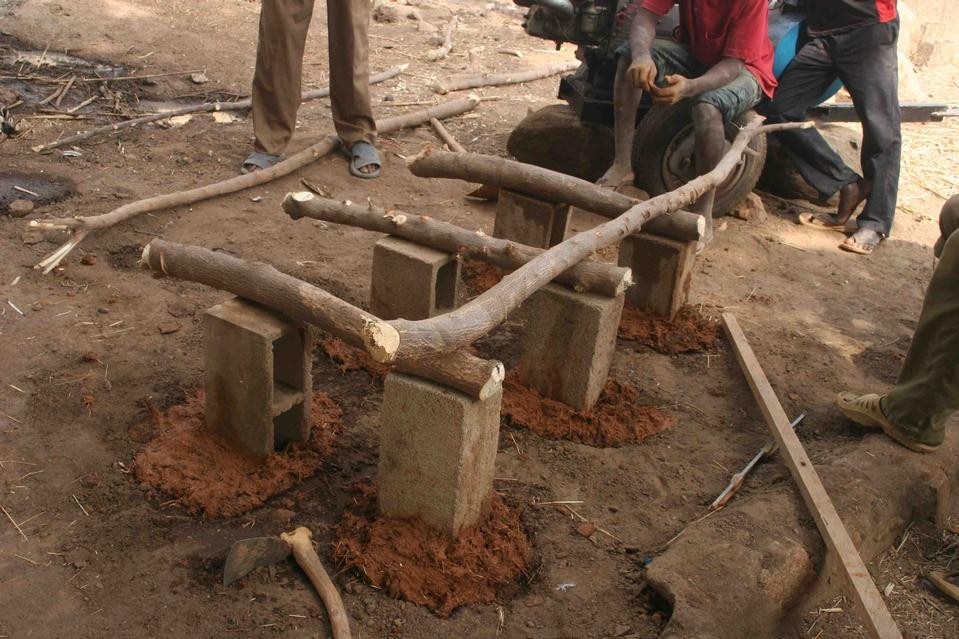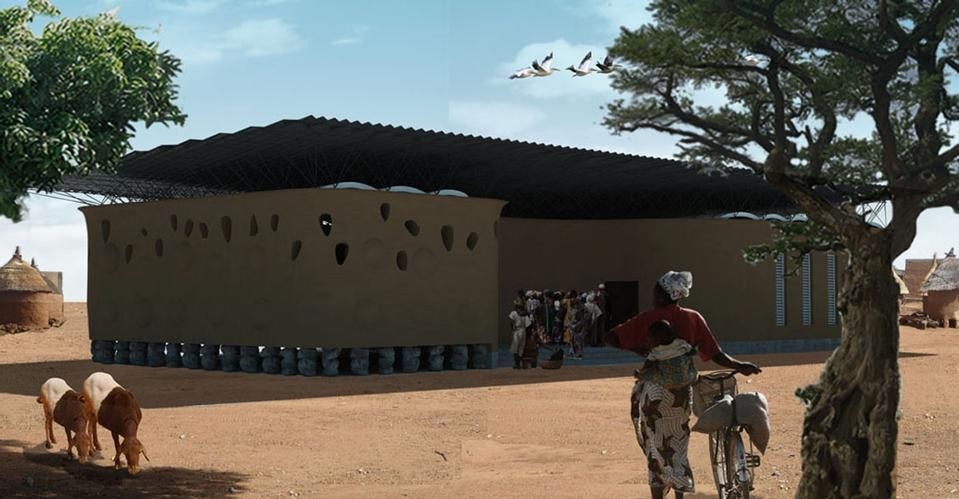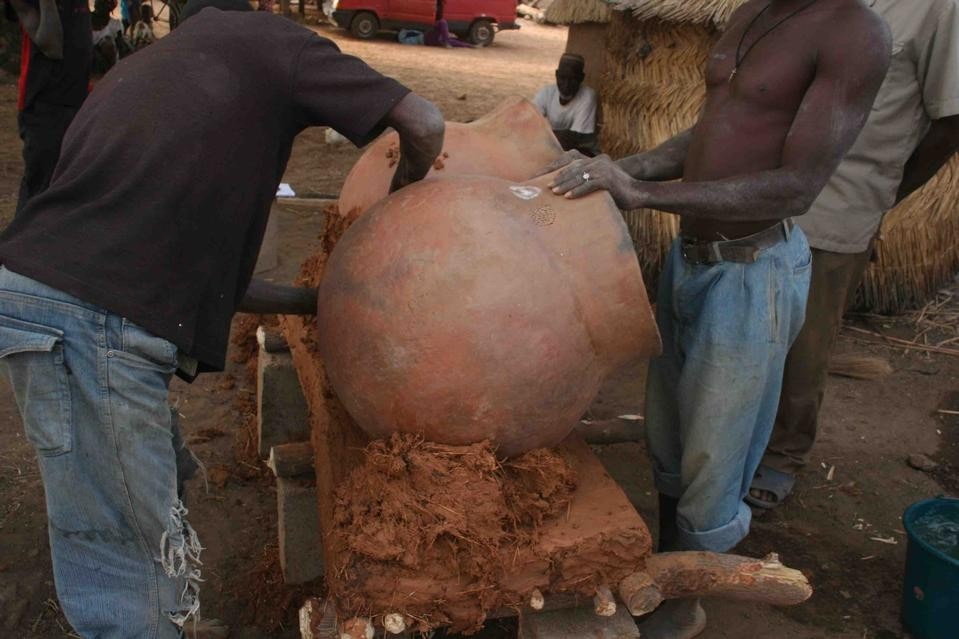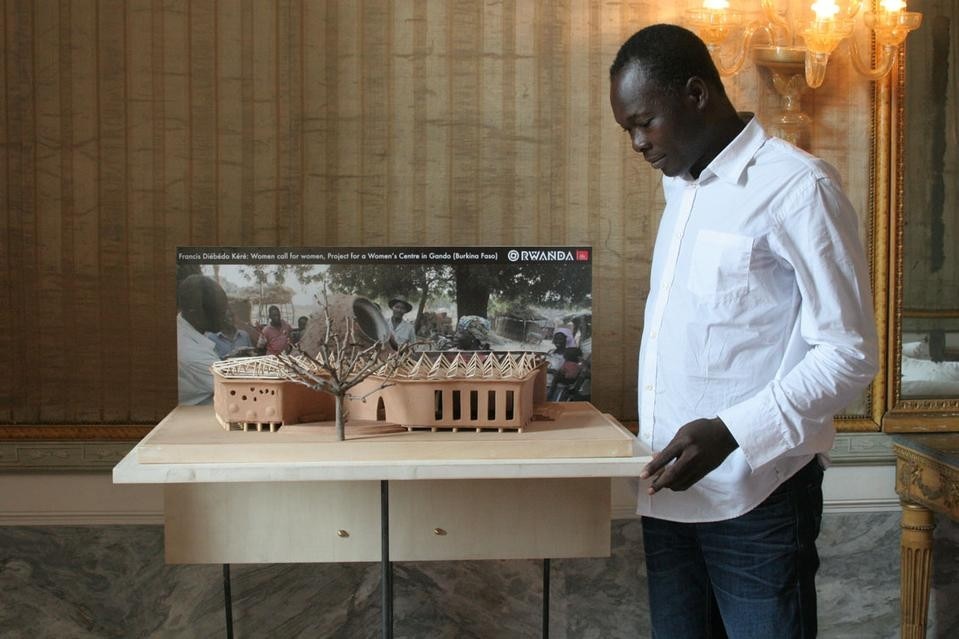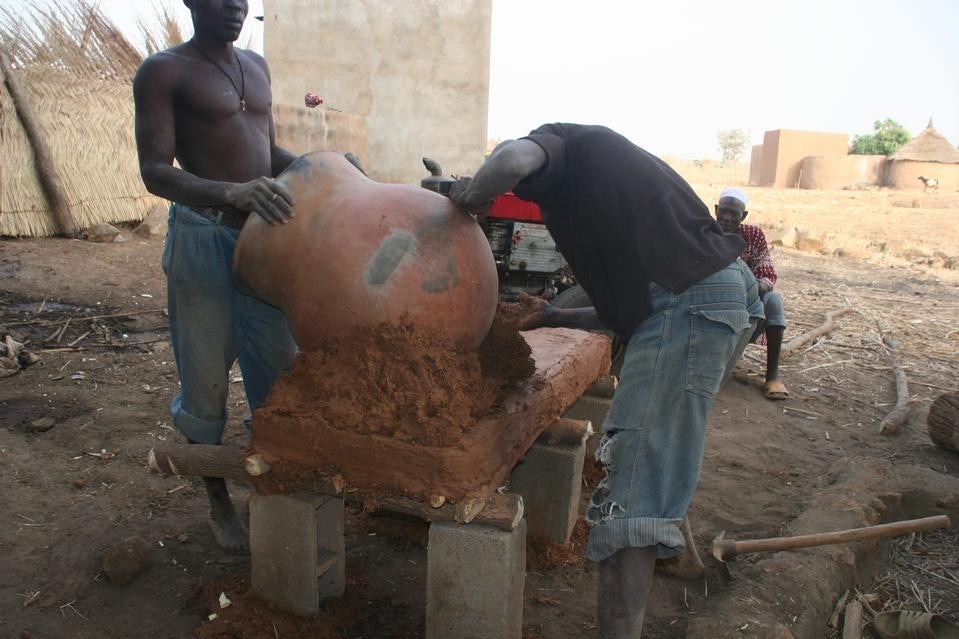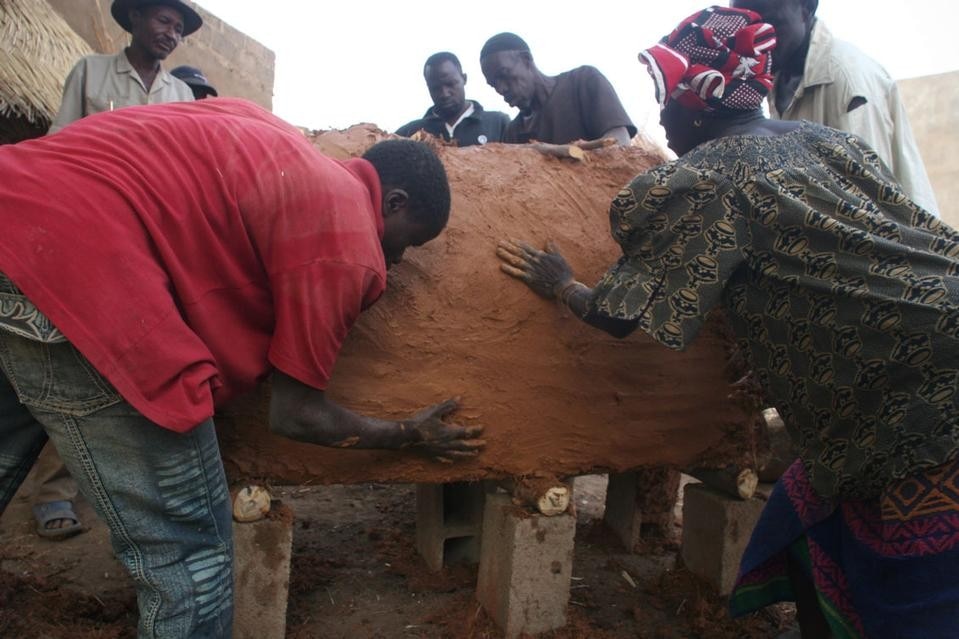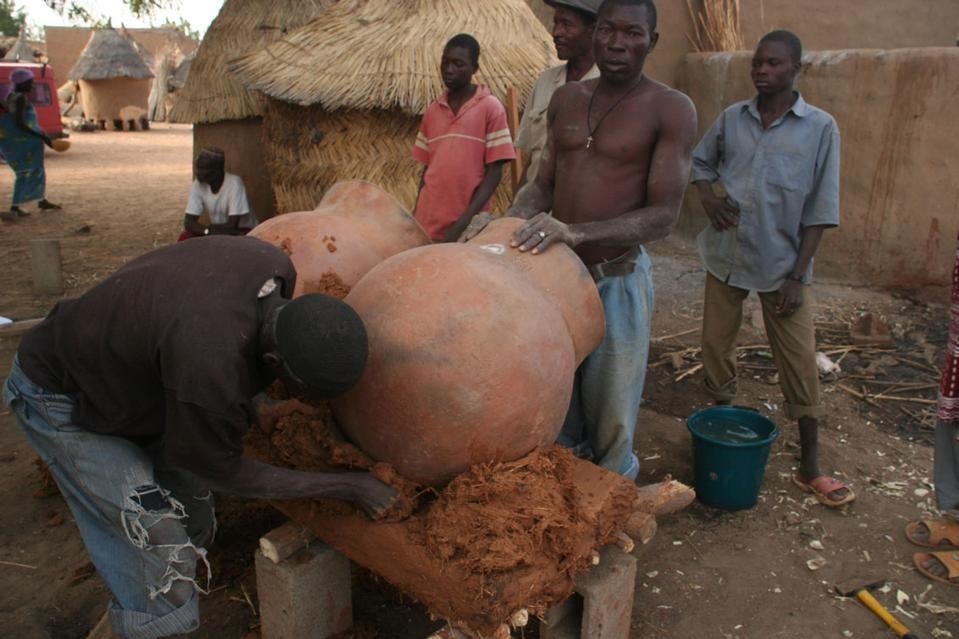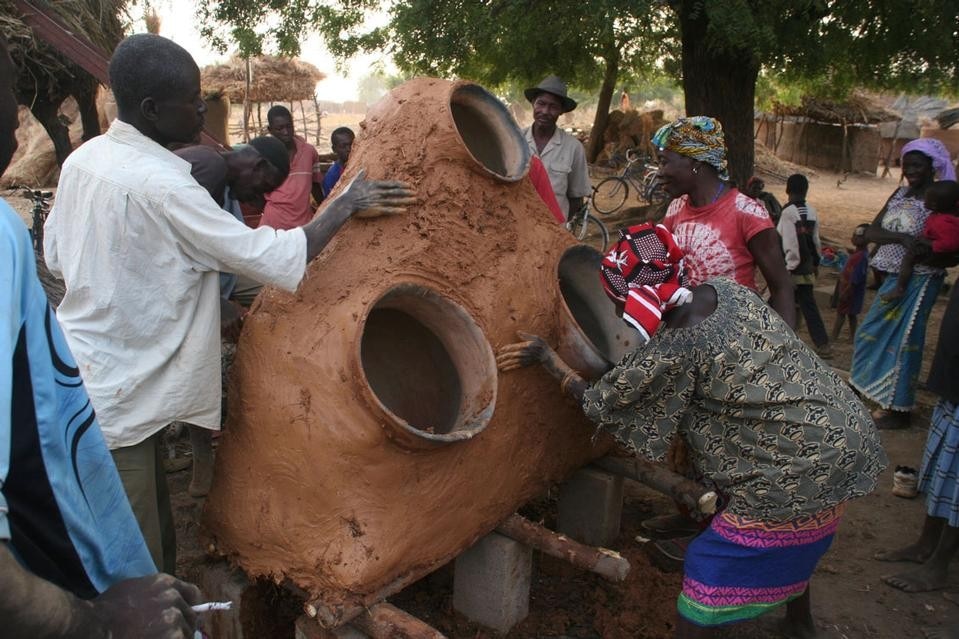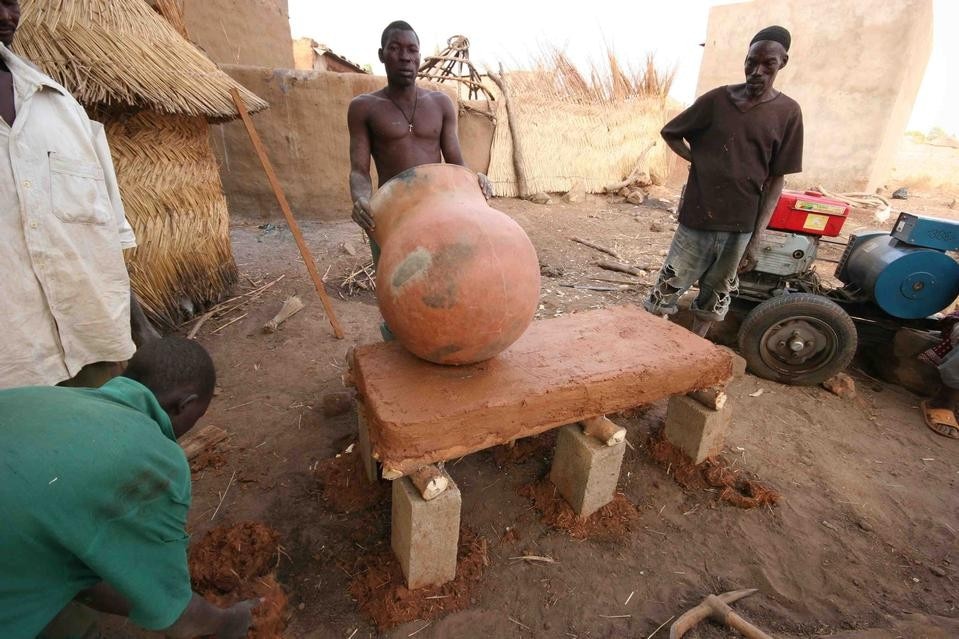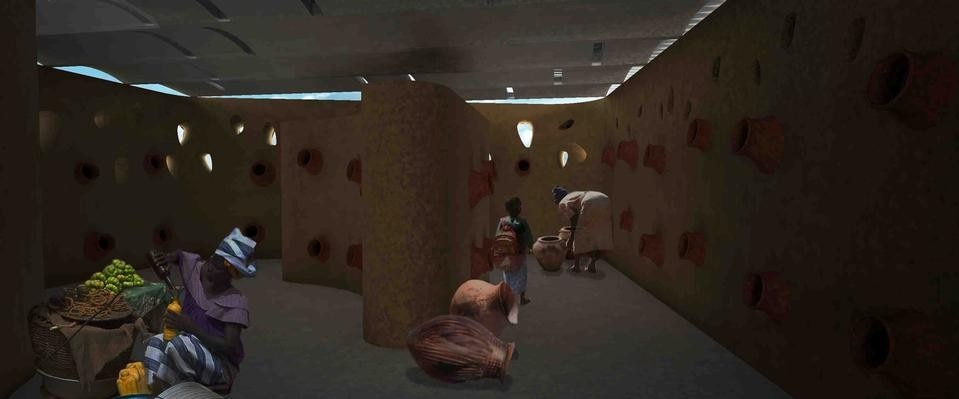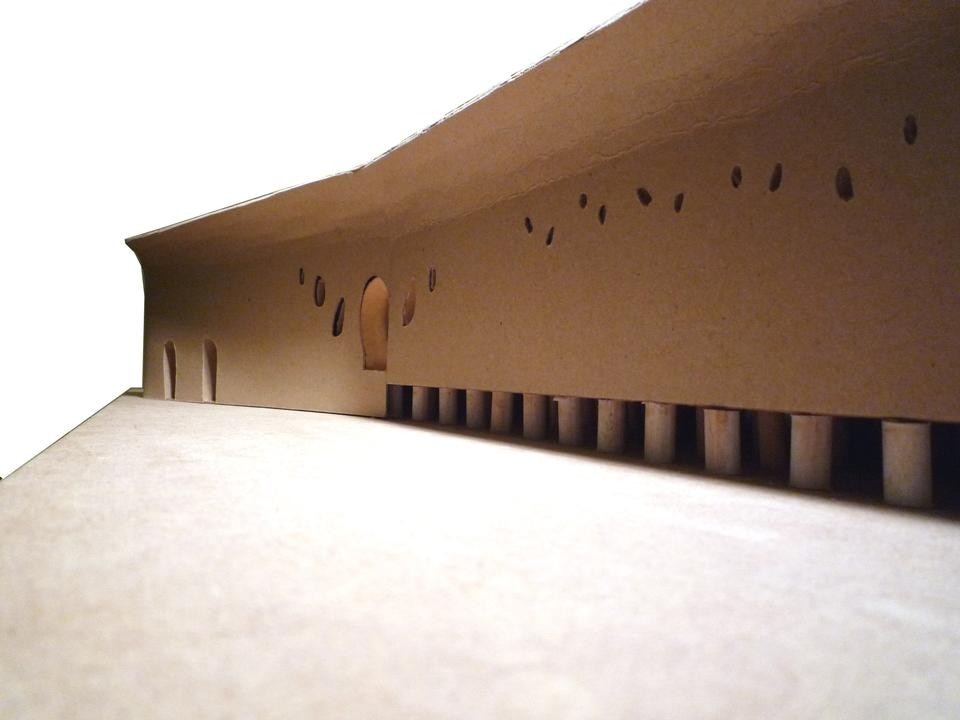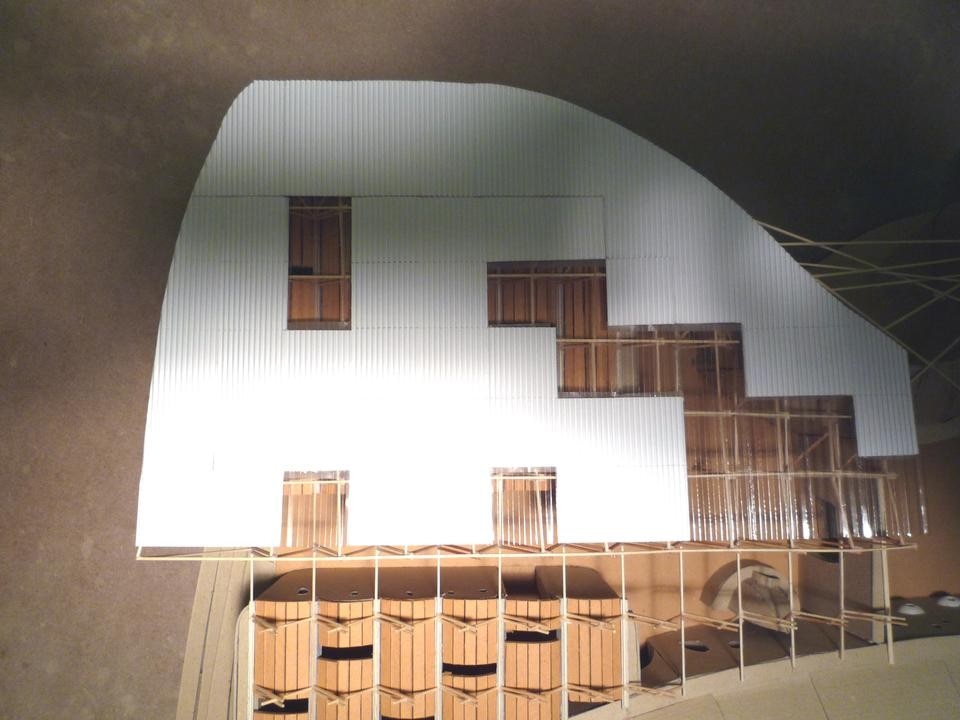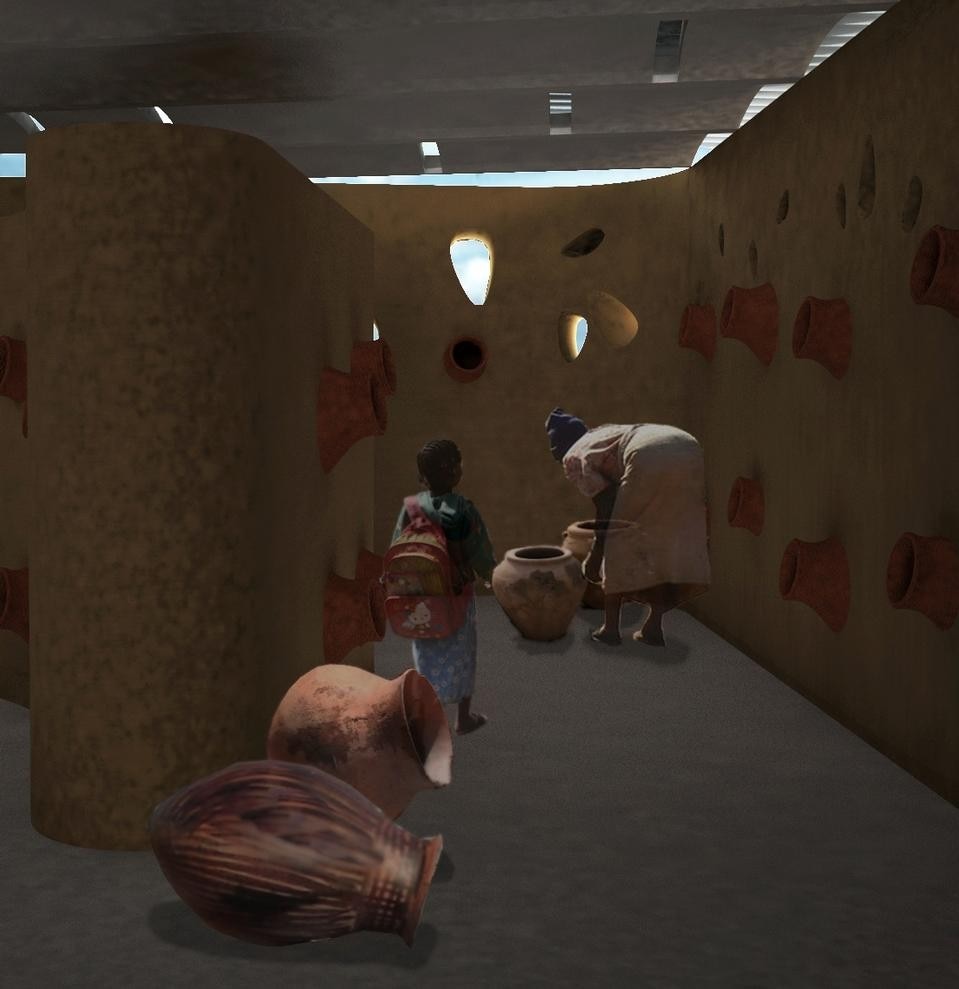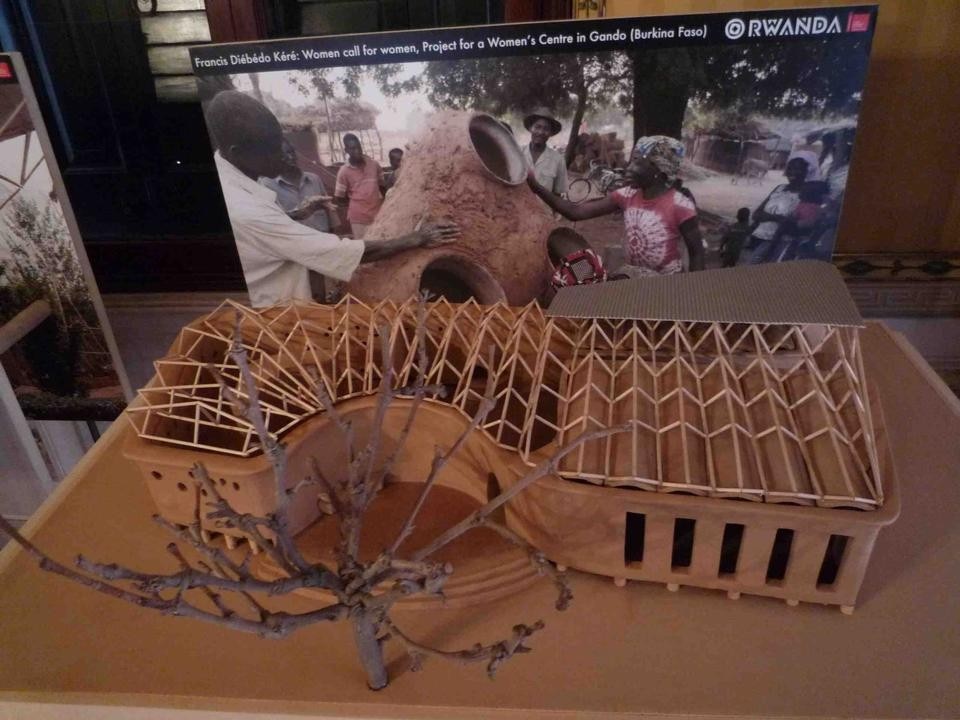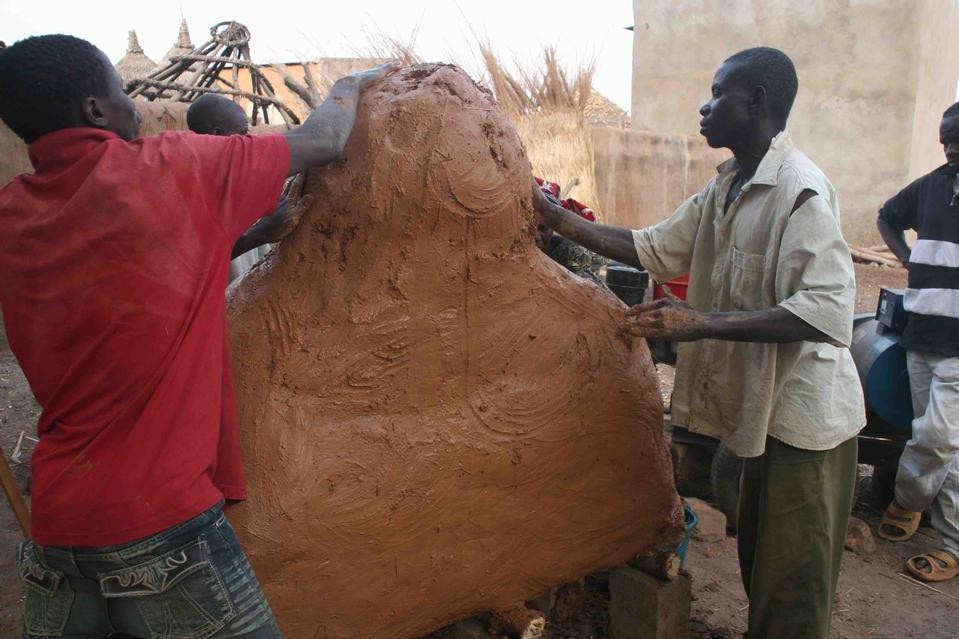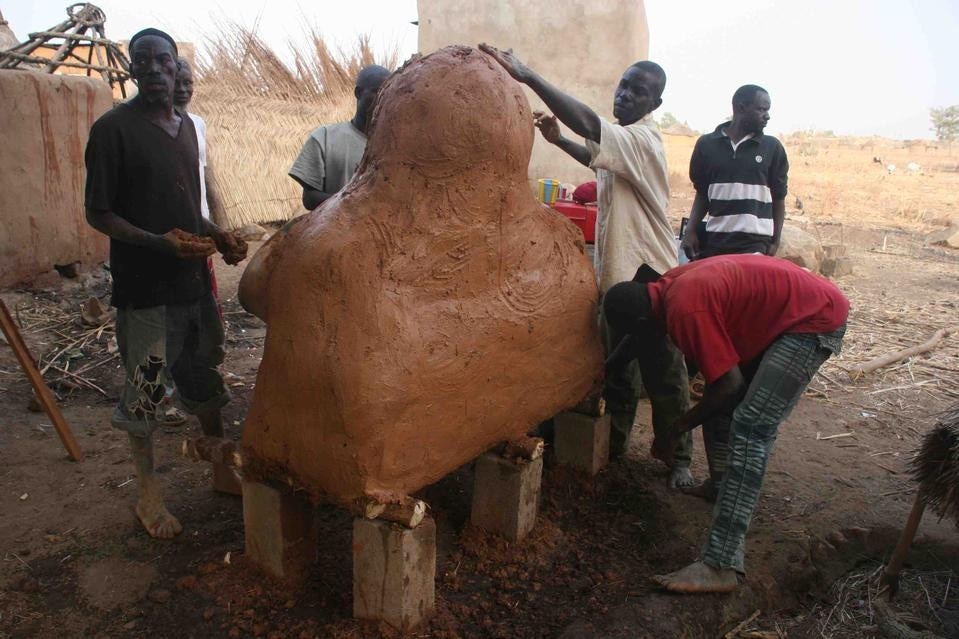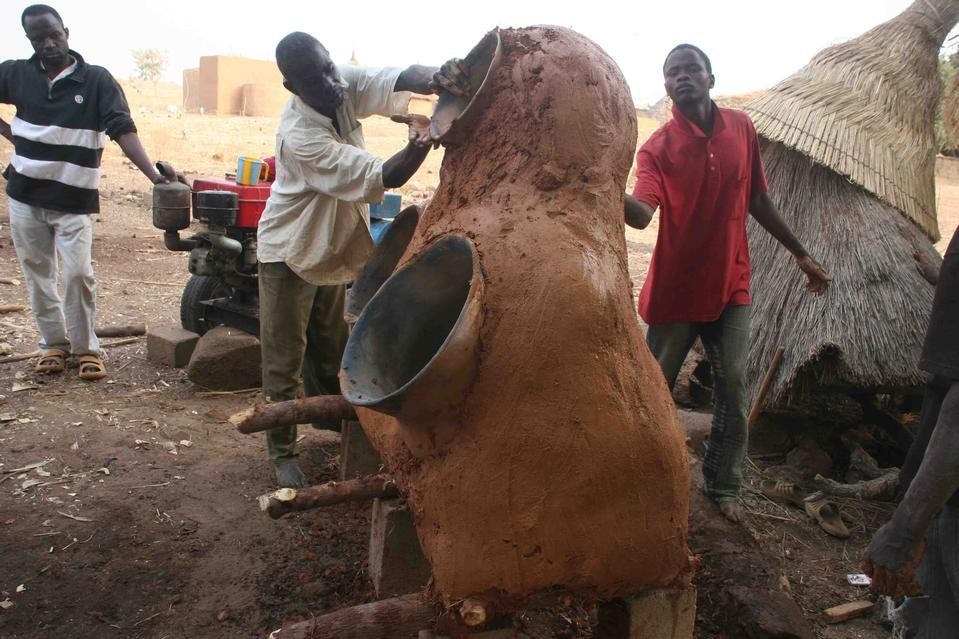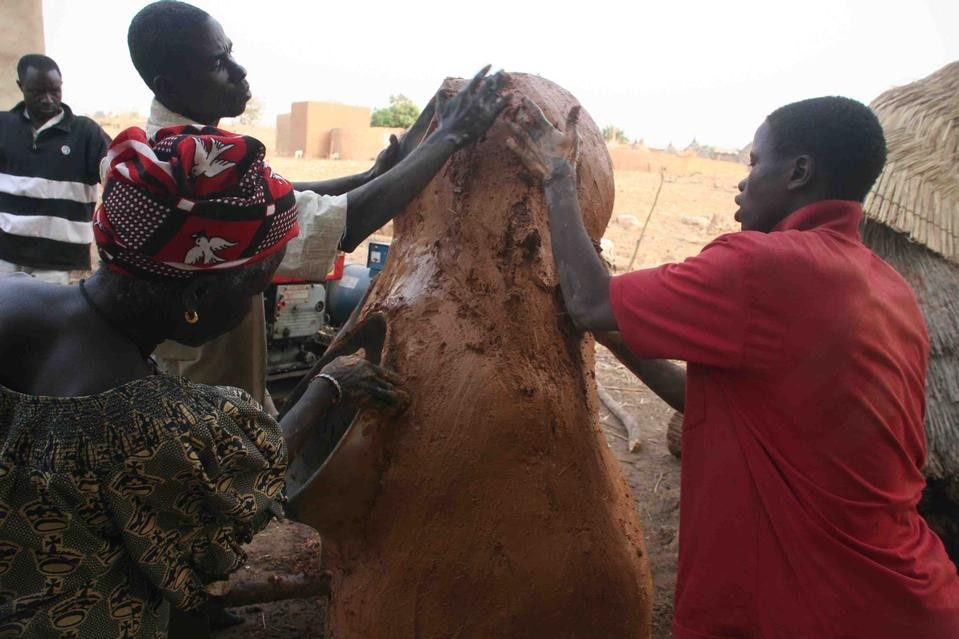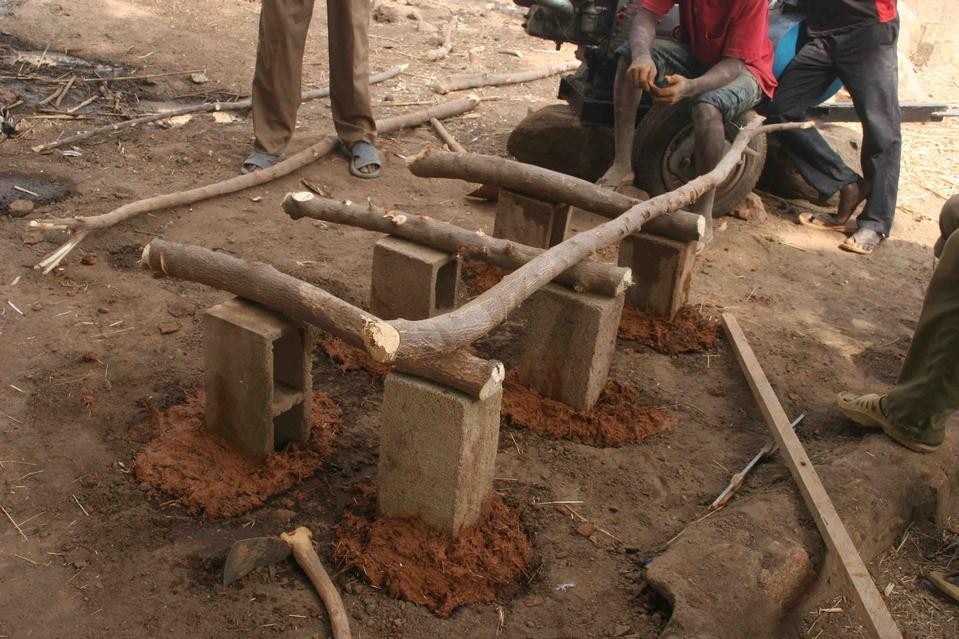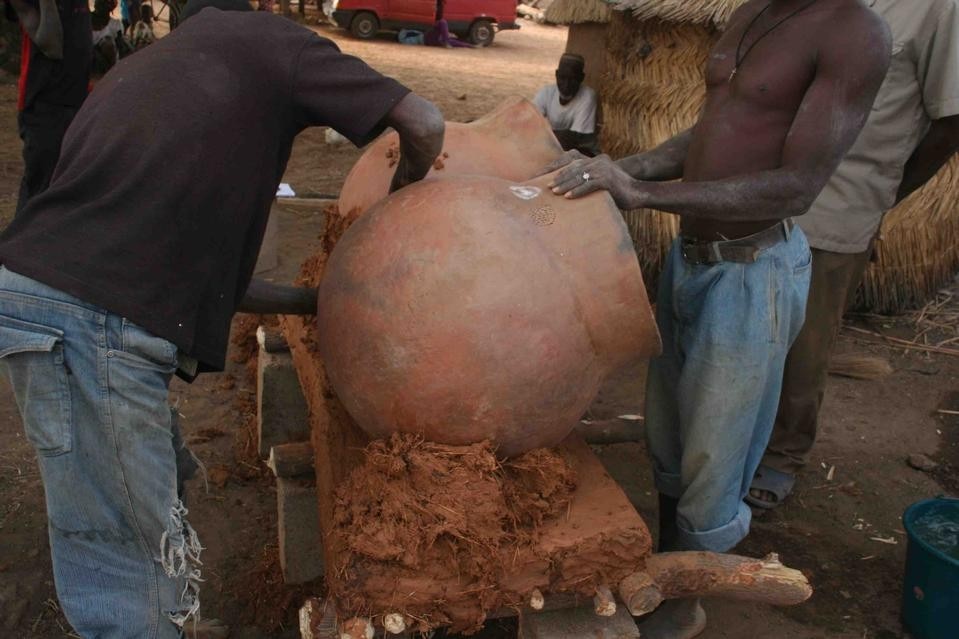In traditional Africa, architecture is a social fact. Whoever needs to build a house first petitions the village which, generally, grants permission to build on a specific plot of land. First, it is important to underline that there is no need to pay for land in order to be able to live in the village and build a house surrounded by a small garden for growing food. This is considered a pure necessity.
Second, if you do build a house, you can't do it alone. It's a job that involves the village community: everyone participates.
Usually we use clay: the women take care of the water, the men mix it with clay and children help in their own way. Everyone takes part in the construction work. Those who can build straight walls become bricklayers and the others help as they can. Those who are unable build sit in to give advice. The elder warn: "Think of rain ....pay attention to the wind....orient it this way or that other ...."
So you can't really say that there is a preconceived plan. The building process just happens. Architecture is defined through the construction process.
How important is traditional oral transmission of knowledge?
Oral transmission of knowledge is a fact. The elder help because they are the keepers of the collective memory of how to build...taking into account climate, seasons, wind ... today building activity is different but the method is always the same.
In your experience with schools in Gando, the village in Burkina Faso where you were born and where your family resides, how do you reconcile tradition and modernity?
Seeking to capitalize on what people are used to. I am interested in starting from how to build and how we work together: this is what I mean by public space.
Normally, in the village, public space is an open space. People gather under a large tree and talk. However, modernity has introduced new educational systems: we need new spaces ... we started by building schools changing somewhat the point of view.
Normally, when the government decides to build a school, an outside builder is called in to the village and begins to build by applying a standardized system of cement modules. Of course, the village offers the land on which to build.
Instead, I try to take advantage of the way in which people are accustomed to work. I trust in the existence of a deeply rooted collective memory.
In the same way they build houses, each person brings his or her own small contribution to make the construction process possible. My contribution is the technology.
Of course I have a plan, but during construction, the building changes, its shape changes because it depends on many variables: the availability of materials, how many people are available, the price of "modern" materials, for example, steel. Things change and we must be able to make them stay together. Before beginning, we do not know the final details; details are defined progressively as the building takes shape. As in the traditional building, construction is a process.
How do you think it is possible to combine traditional techniques with contemporary architecture?
This is a very important question; I would say a central one. Traditional architecture responds to climate; typically buildings are small implying that everyone is able to operate some form of maintenance. It means that when the question of building maintenance arises after the rainy season, everyone is able to tackle the repairs themselves. But when you begin to build "big," this becomes a problem.
What I propose to do is to ensure that buildings will last longer on the basis of traditional building systems, for example, transforming clay, experimenting with new compounds mixing cement, finding the most suitable construction solutions, building basemtes, using laterite or clay bricks for walls. These solutions are all available. We have the earth to make bricks; we just have to dig. Our greatest resource is labor. Many Africans emigrate in search of work; we must try to keep them at home, teach them to work, teach them to use local materials - traditional systems but also new techniques.
I think that giving value to traditional building techniques is the way we can unite tradition and modernity. On the one hand, tradition, on the other, technology. Often, technology is not readily available because, to learn it, you need access to higher education. And education is often in Europe. This is just a fact. That's what happened to me. I studied in Berlin. Now, I try to act as a bridge. I came home and, with my people, we are trying to understand how to combine new technologies with the knowledge of local traditions and materials, taking into account climatic and economic issues. We are not rich in terms of money but we are rich in numbers and we are hungry for knowledge.
Can you talk about the design of the Woman Centre in Gando?
Women are an important part of my job. They have done a lot for me and continue to do so. The project is a center dedicated to the women in my village: it is a dream, but also a necessity. We must bear in mind that most women over fifteen are illiterate.
When I was asked to build a Woman Centre, I thought of a place where women could learn to improve their status, where they could learn to be economically independent even by developing micro-credit projects. So it's a place where they can learn to write and do math, but they can also learn simple technologies like how to cook with less wood to preserve the environment or address questions related to hygiene and health care by getting training in nutrition and health. Along with these teaching functions are such functions as storage space for the harvest, tools and instruments.
During the past academic year, I was at the School of Architecture in Venice. I started this project with my students with the help of Esther Giani. The students devoted themselves to it with great passion and together we created a maquette with which I am very satisfied
Women ask to learn how to have a better life. That's what they want and we will build this center with the help of the women. Step by step, we can do it. We are still looking for the necessary funds which we hope to find to make this dream come true.
Women bear the brunt of poverty. If men can move away to find work around the world when economic conditions worsen, the women remain in the village with the children. We must begin with them. I am sure that without women, there is no future for Africa.
The Architect Diébédo Francis Kéré, will partecipate Wednesday, 17 November 2010, 11 a.m., at the BSI Swiss Architectural Award 2010, at the Accademia di Architettura di Mendrisio.
